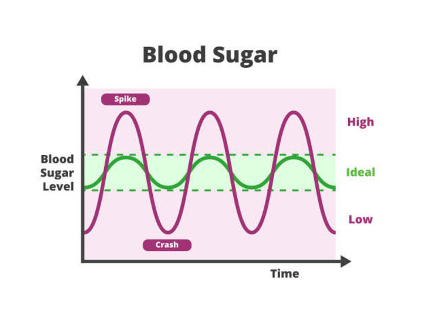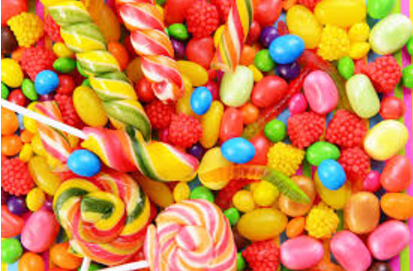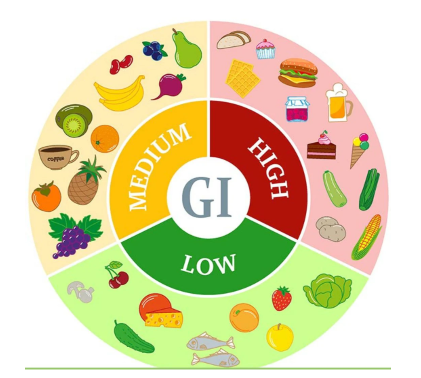With the recent increase in interest in health, various health-related trends and products are emerging. As body profile photography gains popularity alongside the well-being movement craze, many people have begun to make efforts to manage and improve their body shape. According to data released by Yes24, sales of books related to "well-aging," which refers to healthy and gradual aging, have also increased by 53%. Currently, in our society, these efforts have expanded beyond mere beauty purposes to encompass the goals of monitoring, managing, and maintaining individual health. As a result, gluten-free desserts, vegan restaurants, and Mediterranean foods are relatively easy to find. In particular, the interest in zero-food, which means sugar-free, has increased, leading to the emergence of items such as zero drinks, ice cream, and rice with pork. So, what are sugar, sugars (saccharide), and blood sugar and why is managing them so important?
Before discussing the glycemic spike, let's understand what sugars are. Sugars such as fructose, glucose, and lactose are classified as simple sugars. In contrast, complex sugars include starchy foods such as rice, potatoes, and pasta, which are characterized by relatively slow digestion and absorption. The basic concept of 'blood sugar' refers to the sugar present in the blood. A normal blood sugar level is determined by measuring it after fasting for more than 8 hours in the morning and again 2 hours after the start of a meal; the reading should be 140 mg/dL or less.
So, what is a blood sugar spike? It comes from the English term ‘blood sugar spike’. “Blood sugar” refers to the glucose level in the blood. The term describes the sudden increase in blood sugar after the human body consumes certain foods, which is figuratively expressed as a "spike." The term ‘spike’ typically refers to a sharp rise in a line on a chart or graph and is used to visually describe changes in blood sugar. The American Diabetes Association recommends that blood sugar levels should not increase by more than 30 mg/dL after meals. While the criteria may not be precisely defined, an increase of more than 30 mg/dL after meals is considered a blood sugar spike. As diabetes, which is a common disease in the elderly, became an inevitable disease for the 2030s, the blood sugar problems have become more widespread. One reason for this trend is that we consume more glucose today than in the past. Most of the food displayed in supermarkets is primarily composed of starch and sugar. From white bread to ice cream, candy, and fruit juice, it is difficult to find any fiber that helps slow the absorption of glucose in the body. In addition, the fiber is broken down during processing, and is intentionally removed, frozen, and thawed for long-term preservation of food. In addition, consuming sweet foods is one of the easiest ways for humans to trigger dopamine release. We have evolved to feel pleasure from sweetness, and food products are often concentrated with starch and sugar to increase market appeal. As a result, our diets, now dominated by processed foods, are increasingly vulnerable to blood sugar imbalances.

Along with a lack of fiber and high carbohydrate intake, another major cause of blood sugar spikes is a lack of exercise. Exercise plays a crucial role in the body's efficient regulation of blood sugar. Muscles use glucose as an energy source during physical activity, and this consumption of glucose helps lower blood sugar naturally. As a result, insufficient exercise leads to lower glucose consumption in the muscles, making it easier for blood sugar levels to rise. Additionally, when the body's sensitivity decreases due to a lack of exercise or when abdominal fat accumulates, insulin resistance can increase, causing blood sugar spikes to occur more frequently. Insulin is a hormone that helps glucose to be used as an energy source, and if insulin resistance develops, it cannot function properly.

The last major cause is stress. Our bodies secrete stress hormones such as cortisol and epinephrine (adrenaline), which contribute to raising blood sugar levels. In stressful situations, the body releases stored sugar (glycogen) as an energy source to cope with the increased demand. This can lead to a sharp rise in blood sugar levels, resulting in a spike in blood sugar. In addition, constant stress elevates cholesterol levels chronically, which, as previously discussed in relation a lack of exercise, increases insulin resistance, making blood sugar control more difficult.
What kind of symptoms do we experience when a blood sugar spike occurs? Typical symptoms of a blood sugar spike include feeling sleepy after a meal, increased hunger or thirst, loss of concentration, and dizziness. Constant hunger is a result of high insulin levels, and frequent blood sugar spikes can lead to hormonal disturbances. Not only is the problem with the insulin hormone itself, but the signal of leptin, a hormone that signals fullness, is blocked, and ghrelin, a hormone that signals hunger, becomes more active.As you eat more, blood sugar spikes increase, leading to excessive insulin secretion and heightened ghrelin action to store the excess glucose. As you gain weight, a cycle of hunger, unhappiness, fatigue, and frustration can continue. This cycle worsens, especially when you eat a lot of carbohydrates, because glucose is supplied mainly through carbohydrates. While you may feel a boost of energy after eating sweet foods, this is merely a temporary sensation caused by a surge of dopamine in the brain. In reality, it can impair mitochondrial function, leading to increased tiredness and chronic fatigue. Additionally, blood sugar spikes can increase the frequency of migraines, as well as memory and cognitive problems, and the risk of developing Alzheimer's disease. Not only does blood sugar rise sharply, but the rapid decline afterward can also cause problems. Hypoglycemia, which can occur during sleep, may also contribute to sleep disorders.

Therefore, it is recommended to prevent blood sugar spikes as much as possible, even if you are not diabetic. Jesse Inchauspé's book, “The Glucose Revolution,” introduces some of the “10 Rules of Presentation for Stabilizing Blood Sugar Levels.” First, the most notable part is the order in which food is consumed. The author recommends eating dessert at the end of the meal rather than snacking between courses, suggesting a sequence of vegetables, protein, fat, and carbohydrates. When fiber, protein, or fat reach the stomach and intestines before carbohydrates, they slow down the digestive absorption of glucose, resulting in a smoother blood sugar curve. The book also emphasizes that eating sugary foods on an empty stomach is a poor habit, and if you find it hard to resist snacks, it's better to choose salty foods. When eating sugar and carbohydrates, opting for complex sugars instead of simple sugars to slow digestion and absorption is also very helpful in preventing blood sugar spikes.
Then, what should we check in order to determine how high blood sugar is in the food we want to eat and whether it corresponds to complex sugar? The glycemic index (GI) is a value that measures observed changes in blood sugar after 50g of carbohydrates are consumed in the target food. This is determined by how quickly the food is absorbed into the body and raises blood sugar levels. Foods with a high GI can quickly increase blood sugar, leading to excessive insulin secretion. In contrast, foods with a low GI can gradually increase blood sugar, so insulin can stabilize levels effectively. Even foods with the same amount of sugar can vary depending on the processing method, milling, and cooking techniques of the food, so it is recommended to check the GI. A GI below 55 is classified as low, 56 to 69 is considered moderate, and over 70 is classified as high. Jesse Inchauspé recommends starting every meal with a salad with apple cider vinegar or vinaigrette diluted in water. Vinegar temporarily inactivates enzymes that break down sugar and starch into glucose. In addition, it helps our muscles consume more glucose, resulting in less sugar circulating in the bloodstream.

In fact, Dr. Ronnie Abu-Khalil conducted an experiment on the effects of vinegar intake. Participants aged 12 to 25 were divided into three groups and asked to drink 5, 10, or 15 milliliters (ml) of vinegar each morning. At the start of the study, the average weight of the participants was about 78.5 kg, but it was found that all three groups lost weight after 12 weeks. The group who drank 15 ml each day had the largest average weight loss, with an average weight reduction to 70.3. Additionally, all three groups had reduced back and hip circumferences as well as body mass index (BMI). In addition, blood sugar, triglyceride, and cholesterol levels improved significantly.
In addition to improving our eating habits, there are also several ways to manage blood sugar in our daily lives. Simple exercise like a 10-minute walk after meals can greatly help lower blood sugar. Furthermore, as muscles consume glucose, increasing muscle mass and increasing basal metabolism through exercise can help maintain consistent blood sugar levels after meals. By effectively managing these efforts, along with ensuring adequate sleep and reducing stress, you can relatively stabilize your blood sugar levels.
What about your current diet? Haven't you usually experienced blood sugar spikes unknowingly? Consider incorporating small but impactful changes into your daily life to achieve better health outcomes.

